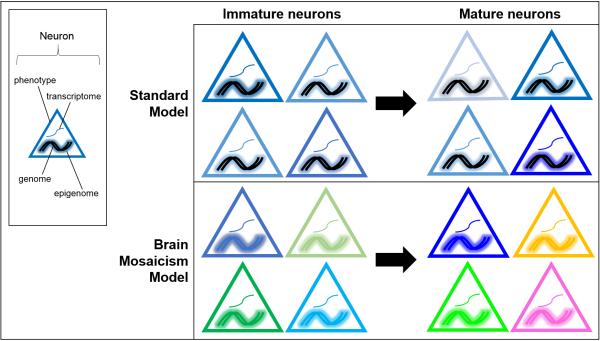Figure 1.
Single cell transcriptomes reflect many aspects of cell state. Cell intrinsic and extrinsic developmental cues lead to some level of neuronal diversity in immature neurons. Activity-dependent plasticity then further diversifies individual neurons as the brain matures. Standard models of neurodevelopment are based on the assumption that neuronal genomes are static. We propose a brain mosaicism model where neuronal genomes change during development and then further through life, leading to greater levels of neuron-to-neuron diversity. In tandem with epigenomic modifications and transcriptional regulation, this diversity could perhaps approach a level where every neuron is unique. Schematic of various aspects of cell state: the transcriptome is represented as a single curved line, the genome is represented a double helix, the epigenome is represented as a glow around the genome, and the neuron's phenotype is represented by the border color of each triangle.

